
Aguas Calientes: The Gateway to Machu Picchu
Discover Aguas Calientes, the enchanting gateway to Machu Picchu, rich with culture, natural beauty, and traditional Peruvian charm.
Nestled in the lush mountains of the Peruvian Andes, Aguas Calientes is a charming small town that serves as the main gateway to the iconic Machu Picchu. The town, often referred to as Machu Picchu Pueblo, is surrounded by breathtaking landscapes, including the Urubamba River and verdant forests, which provide a stunning backdrop for your journey to the ancient Incan citadel. Aguas Calientes is a bustling hub of activity, especially during peak tourist seasons. The town's streets are lined with cozy cafes, vibrant markets, and a variety of restaurants offering traditional Peruvian cuisine. The local market is an excellent place to pick up unique souvenirs, such as handcrafted textiles and alpaca wool products. One of the highlights of Aguas Calientes is its natural hot springs, which are perfect for relaxing after a day of exploring. The town also offers several hiking trails, including the popular climb to Putucusi Mountain, which provides an alternative view of Machu Picchu. With its unique blend of natural beauty and cultural richness, Aguas Calientes is more than just a stopover; it is an essential part of the Machu Picchu experience.
Local tips in Aguas Calientes
- Visit the local market early in the morning to avoid crowds and get the best picks.
- Pack a swimsuit and towel for a relaxing dip in the town's hot springs.
- If you're planning to hike, start early to avoid the midday heat and bring plenty of water.
- Book train tickets to and from Aguas Calientes in advance, especially during peak seasons.
- Explore the lesser-known hiking trails for unique views of Machu Picchu and the surrounding area.
Aguas Calientes: The Gateway to Machu Picchu
Nestled in the lush mountains of the Peruvian Andes, Aguas Calientes is a charming small town that serves as the main gateway to the iconic Machu Picchu. The town, often referred to as Machu Picchu Pueblo, is surrounded by breathtaking landscapes, including the Urubamba River and verdant forests, which provide a stunning backdrop for your journey to the ancient Incan citadel. Aguas Calientes is a bustling hub of activity, especially during peak tourist seasons. The town's streets are lined with cozy cafes, vibrant markets, and a variety of restaurants offering traditional Peruvian cuisine. The local market is an excellent place to pick up unique souvenirs, such as handcrafted textiles and alpaca wool products. One of the highlights of Aguas Calientes is its natural hot springs, which are perfect for relaxing after a day of exploring. The town also offers several hiking trails, including the popular climb to Putucusi Mountain, which provides an alternative view of Machu Picchu. With its unique blend of natural beauty and cultural richness, Aguas Calientes is more than just a stopover; it is an essential part of the Machu Picchu experience.
Iconic landmarks you can’t miss
Historic Sanctuary of Machu Picchu
Discover the breathtaking ancient ruins of Machu Picchu, a UNESCO World Heritage site that showcases the pinnacle of Inca civilization amidst stunning Andean landscapes.
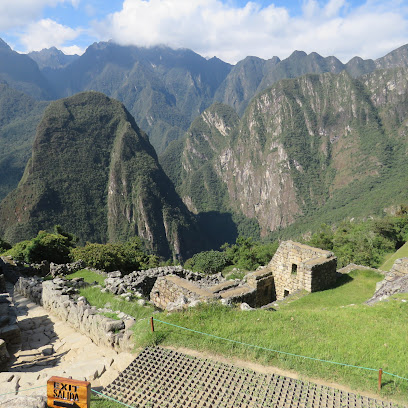
Manco Capac Square
Discover the vibrant Manco Capac Square in Aguas Calientes, a cultural gem near Machu Picchu with stunning views and local charm.
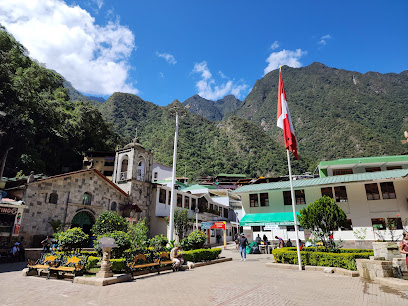
Baños Termales (Machu Picchu)
Discover the rejuvenating Baños Termales in Aguas Calientes, where natural hot springs meet stunning Andean landscapes for a serene escape.

Mariposario of Machu Picchu
Explore the vibrant Mariposario of Machu Picchu, a butterfly sanctuary where nature's beauty comes alive in a breathtaking setting.
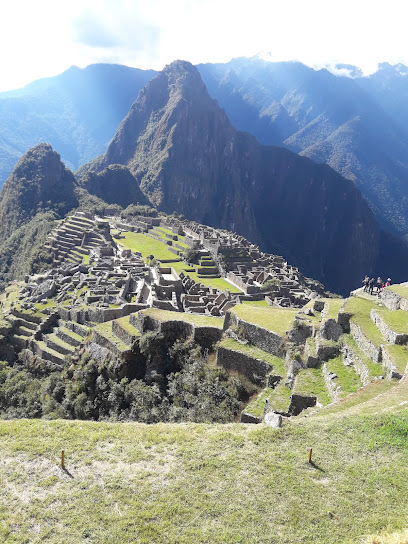
Mercado Aguas Calientes
Explore Mercado Aguas Calientes for an authentic Peruvian market experience filled with local crafts, fresh produce, and delicious traditional cuisine.
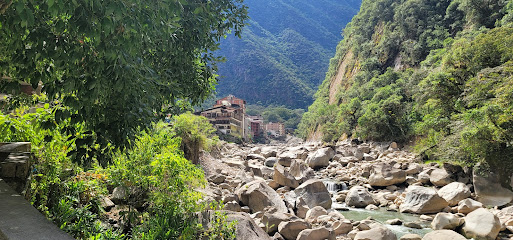
Plaza Pueblo Machu Picchu
Experience the vibrant culture and stunning scenery at Plaza Pueblo Machu Picchu, your gateway to exploring the ancient Incan wonders.
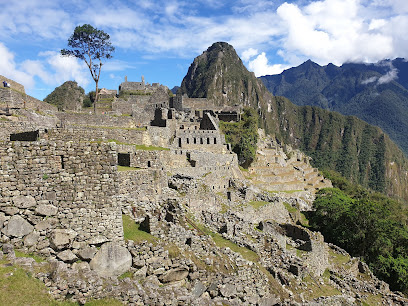
Ministry of Culture (Machu Picchu Park Passes)
Explore the rich heritage of the Inca civilization at the Ministry of Culture, your gateway to Machu Picchu Park passes.
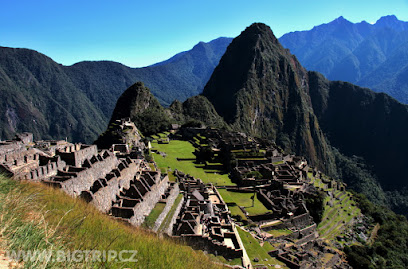
Cascadas Alcamayo
Experience the breathtaking beauty of Cascadas Alcamayo in Aguas Calientes, where stunning waterfalls and lush landscapes await every nature lover.
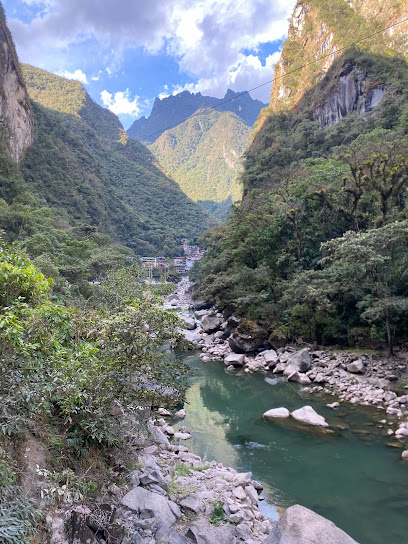
Machu Picchu Peak
Explore the captivating Machu Picchu Peak, where breathtaking views and Inca history converge in the heart of the Andes.
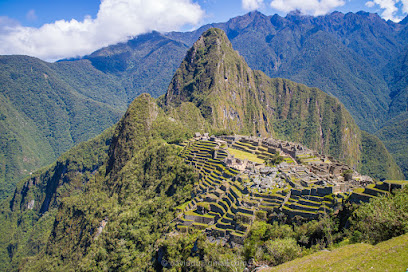
Camino peatonal a Machu Picchu
Discover the breathtaking Camino peatonal a Machu Picchu, a scenic hiking trail leading to the iconic Incan ruins amidst stunning Andean landscapes.
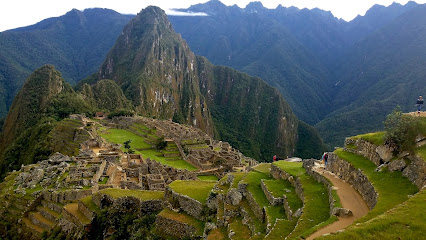
Estatua Machu Picchu Pueblo
Explore the iconic Statue of Machu Picchu Pueblo in Aguas Calientes, a tribute to Incan heritage surrounded by breathtaking landscapes.
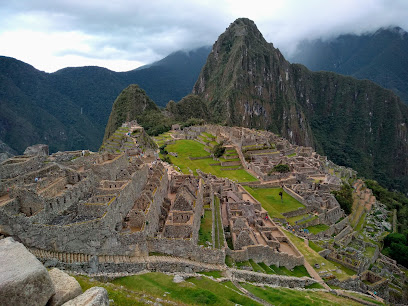
Machu Picchu pueblo (Inca sculpture)
Discover the enchanting Machu Picchu Pueblo, where Inca sculpture meets breathtaking landscapes and rich cultural heritage in Aguas Calientes.
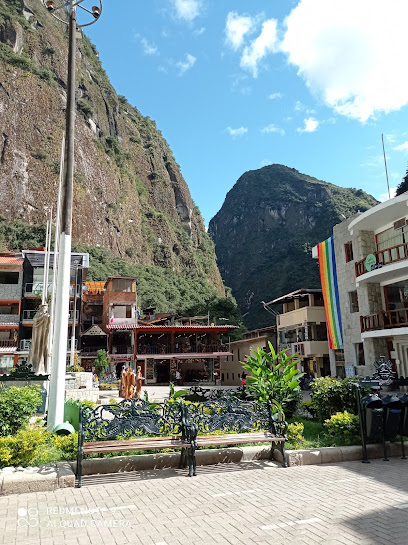
Machu
Experience the wonders of Machu Picchu, an ancient Incan citadel set amidst breathtaking Andean mountains, rich in history and stunning scenery.

Cataratas de Aguas Calientes
Explore the breathtaking beauty of Cataratas de Aguas Calientes, a captivating waterfall oasis in the heart of Peru's stunning landscapes.
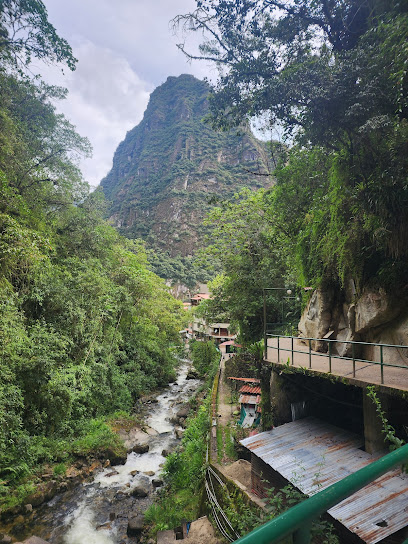
Mirador Río Vilcanota Park
Discover the natural beauty at Mirador Río Vilcanota Park in Aguas Calientes, where stunning views and tranquility await every visitor.
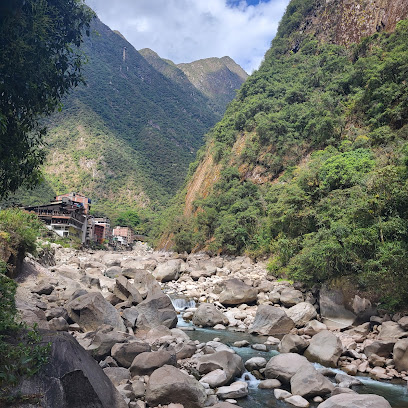
Unmissable attractions to see
Historic Sanctuary of Machu Picchu
Discover the breathtaking Incan citadel of Machu Picchu, a UNESCO World Heritage site offering stunning views and rich history in the heart of Peru.
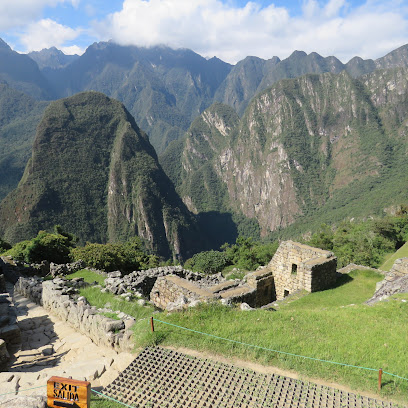
Manco Capac Square
Discover the vibrant atmosphere of Manco Capac Square, a picturesque park surrounded by restaurants and shops in Aguas Calientes, Peru.
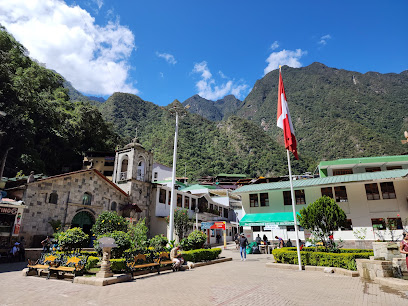
Mandor
Explore Mandor, a stunning ecological park and botanical garden in Aguas Calientes, Peru, offering breathtaking landscapes and tranquil hiking trails.
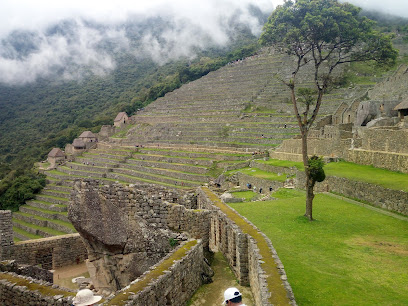
Mariposario of Machu Picchu
Discover the magic of butterflies at the Mariposario of Machu Picchu, a vibrant sanctuary nestled in the heart of Peru's breathtaking landscapes.
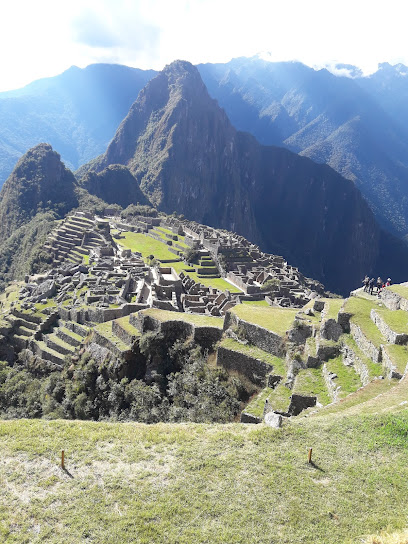
Manuel Chávez Ballón Site Museum
Discover the rich history of Peru at the Manuel Chávez Ballón Site Museum, where ancient artifacts and serene landscapes await your exploration.
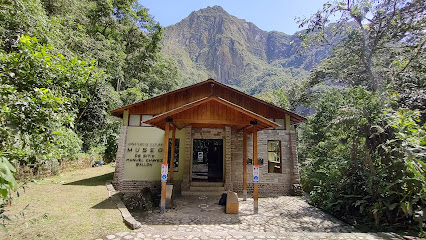
Sacred Rock at Machu Picchu
Discover the Sacred Rock at Machu Picchu, a majestic testament to the Inca civilization amidst breathtaking Andean landscapes.

Ministry of Culture (Machu Picchu Park Passes)
Discover the essence of Inca culture at the Ministry of Culture, your gateway to Machu Picchu Park passes and rich Andean heritage.
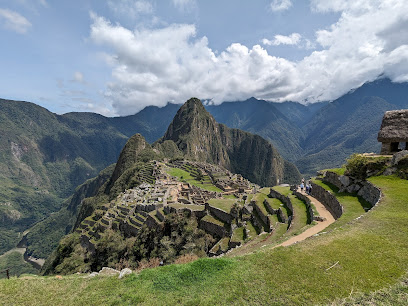
Temple of the Three Windows
Explore the Temple of the Three Windows, a masterpiece of Incan architecture within Machu Picchu, offering breathtaking views and spiritual insight.
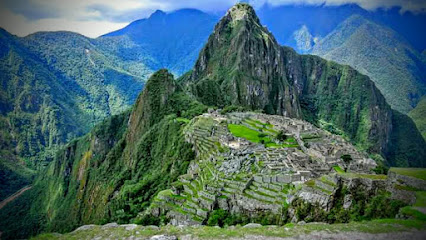
Temple of the Moon at Machu Picchu
Discover the ancient spirituality at the Temple of the Moon at Machu Picchu, a captivating archaeological site nestled in the Andes.
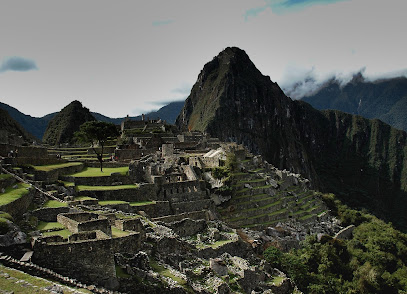
Cascadas Alcamayo
Explore the breathtaking Cascadas Alcamayo in Aguas Calientes, where nature’s beauty and tranquility await every visitor.
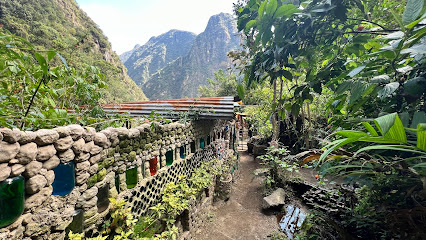
Intipata
Explore the serene agricultural terraces of Intipata, a stunning Incan archaeological site with breathtaking views in the heart of the Andes.
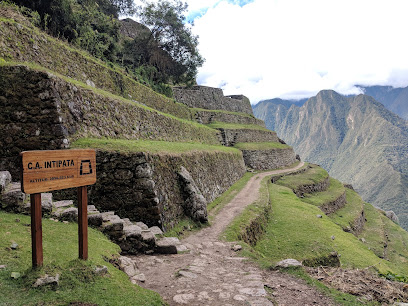
Intimachay
Discover Intimachay, the ancient Incan cave sanctuary near Machu Picchu, where spirituality and breathtaking landscapes intertwine.
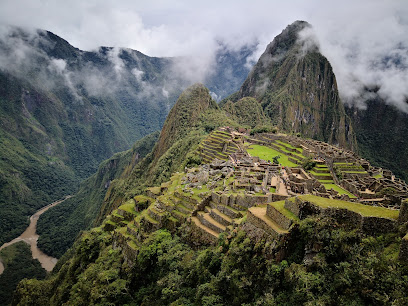
National Archaeological Park Of Machu Picchu
Discover Machu Picchu, a breathtaking archaeological wonder in Peru, and immerse yourself in the rich history of the Incan civilization amidst stunning mountain vistas.
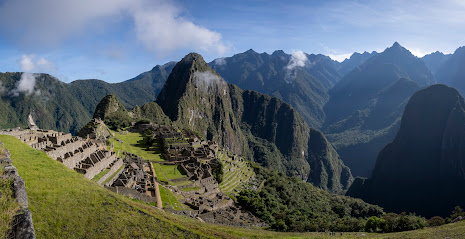
Machu
Discover the breathtaking beauty and rich history of Machu, the gateway to the legendary Machu Picchu in Aguas Calientes, Peru.
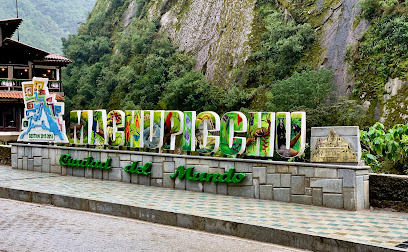
Cataratas de Aguas Calientes
Explore the breathtaking Cataratas de Aguas Calientes, a stunning waterfall in Peru surrounded by lush nature and vibrant wildlife.
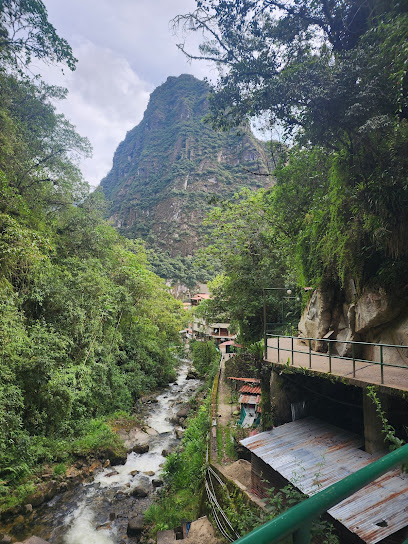
Essential places to dine
Chullos Restaurant & Craft Beer
Experience the essence of Peru at Chullos Restaurant & Craft Beer in Aguas Calientes - where tradition meets flavor.
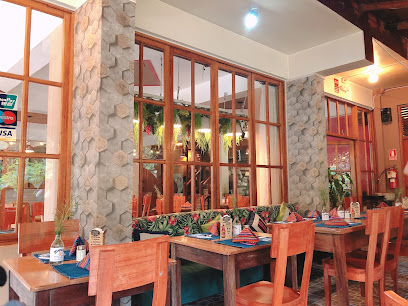
Full House Peruvian cuisine &craft beer
Experience authentic Peruvian cuisine paired with local craft beers in Aguas Calientes' vibrant eatery.
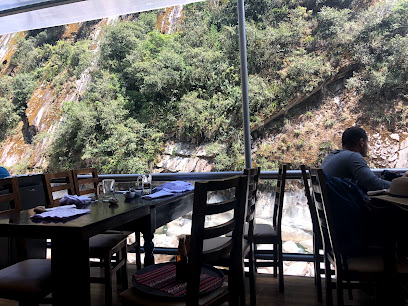
Restaurant Bistro Bar Indio Feliz
Discover exquisite Peruvian flavors at Restaurant Bistro Bar Indio Feliz in Aguas Calientes—an unforgettable dining experience amidst stunning scenery.
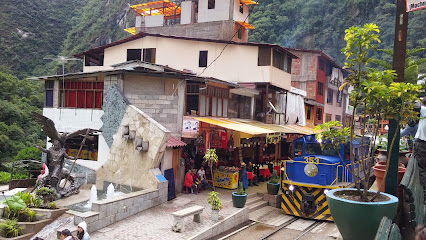
Incontri del Pueblo Viejo
Experience authentic Peruvian cuisine at Incontri del Pueblo Viejo in Aguas Calientes – where every meal tells a story.
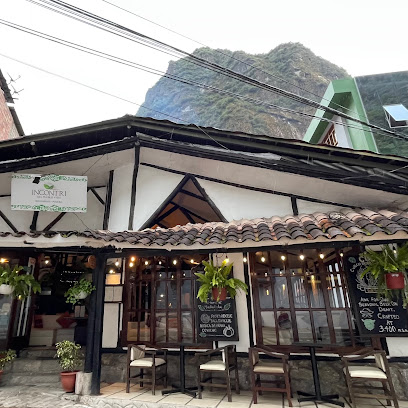
Ponchos Machupicchu Restaurant
Experience authentic Peruvian cuisine at Ponchos Machupicchu Restaurant in Aguas Calientes - where every dish tells a story.
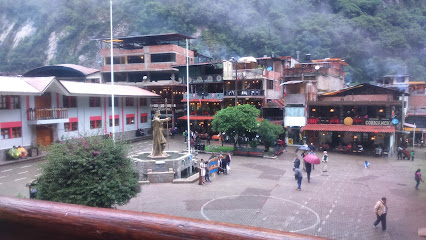
Chef House Restaurant - Machu Picchu
Experience authentic Peruvian cuisine at Chef House Restaurant near Machu Picchu; indulge in local flavors amidst breathtaking scenery.
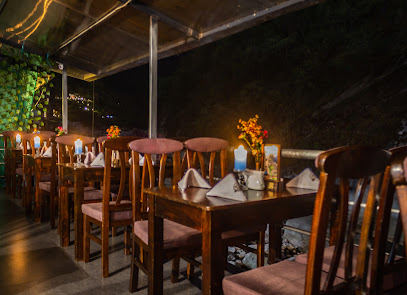
Apu Inti Restaurante
Experience authentic Peruvian flavors at Apu Inti Restaurante in Aguas Calientes, where tradition meets taste in every dish.

Green House
Experience organic Peruvian cuisine at Green House near Machu Picchu – where freshness meets flavor in every dish.
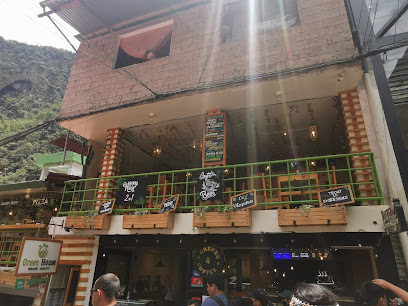
Palate bistro machupichu
Experience the authentic taste of Peru at Palate Bistro Machu Picchu, where exquisite cuisine meets breathtaking views.
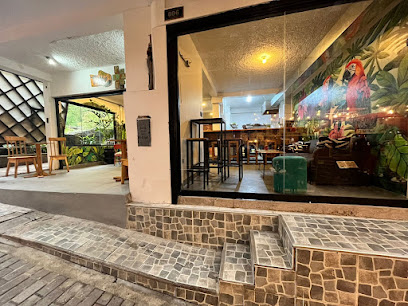
Sami Restaurant
Discover authentic Peruvian flavors at Sami Restaurant in Aguas Calientes—where every dish tells a story.
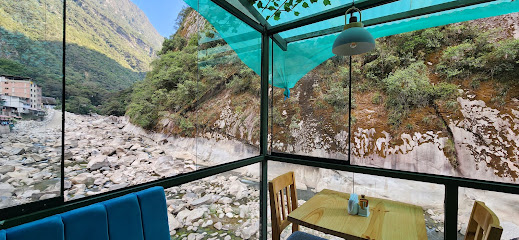
Markets, malls and hidden boutiques
Mercado Aguas Calientes
Discover the vibrant Mercado Aguas Calientes, a cultural marketplace offering local crafts, traditional cuisine, and an authentic Peruvian experience.
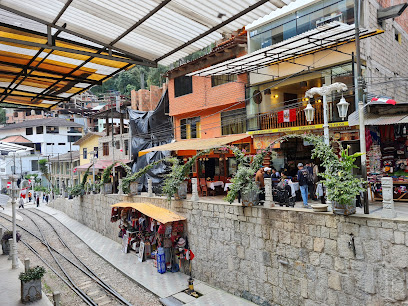
La Boulangerie de Paris - Machupicchu
Experience the flavors of France at La Boulangerie de Paris, a charming café in Aguas Calientes, the gateway to Machu Picchu, offering exquisite pastries and coffee.
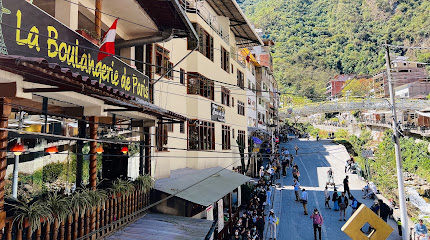
Tao Dulce Salado
Discover culinary delights at Tao Dulce Salado, Aguas Calientes' favorite café for hamburgers and ice cream, perfect for every traveler.

Quechua´s House - Coffee Bookshop
Discover the rich flavors of Peruvian coffee at Quechua's House, a cozy coffee bookshop in Aguas Calientes, perfect for travelers and locals alike.
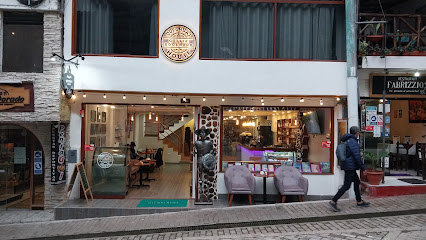
Mercado de Abastos
Explore the vibrant Mercado de Abastos in Aguas Calientes for an authentic taste of Peruvian culture and delicious local flavors.
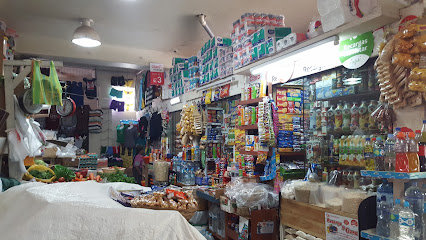
Mapi Art
Discover Mapi Art in Aguas Calientes: Where Clothing and Jewelry Reflect Peru's Rich Cultural Heritage.
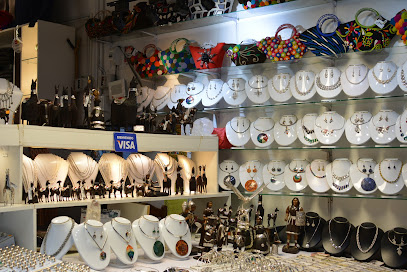
Aguas Calientes Market
Discover the vibrant Aguas Calientes Market, a cultural hub filled with local crafts, delicious cuisine, and the spirit of Peru.
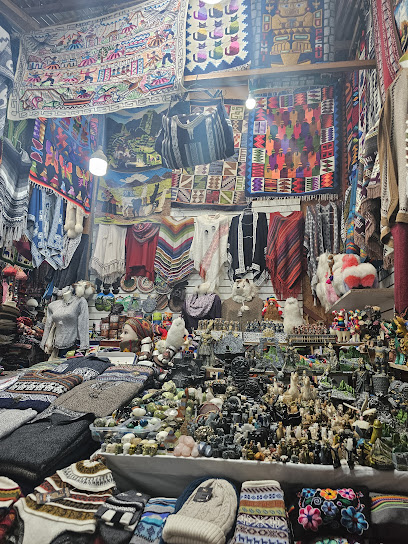
Gift market
Discover the vibrant Aguas Calientes Gift Market, where local craftsmanship and culture come together in a delightful shopping experience.
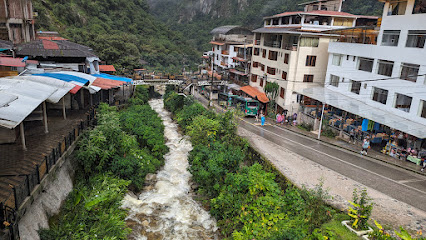
The best silver acce shop
Explore exquisite handcrafted silver jewelry in Aguas Calientes, reflecting Peru's rich cultural heritage and craftsmanship.
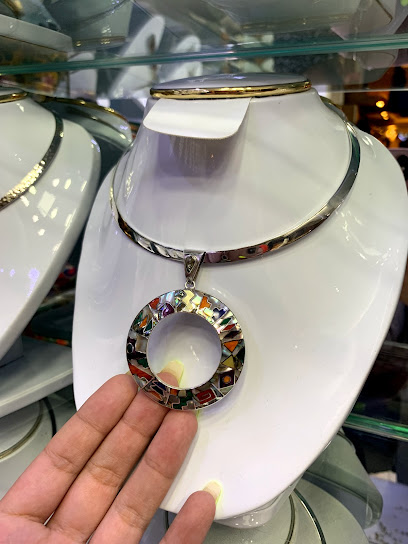
Quenacho sax
Explore Quenacho Sax in Aguas Calientes for unique Peruvian gifts, handcrafted treasures, and cultural artifacts that embody the spirit of Machu Picchu.
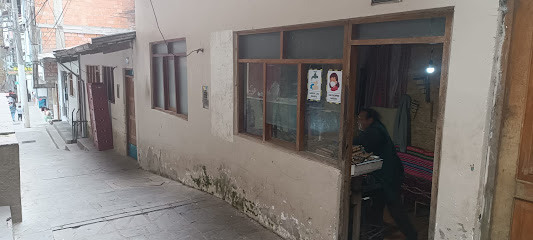
Essential bars & hidden hideouts
Chullos Restaurant & Craft Beer
Experience the rich and diverse flavors of Peru at Chullos Restaurant & Craft Beer, where traditional meets contemporary in a vibrant dining atmosphere.

Magguis Grill Craft Beer
Experience authentic Peruvian flavors and local craft beers at Magguis Grill in Aguas Calientes, the gateway to Machu Picchu.
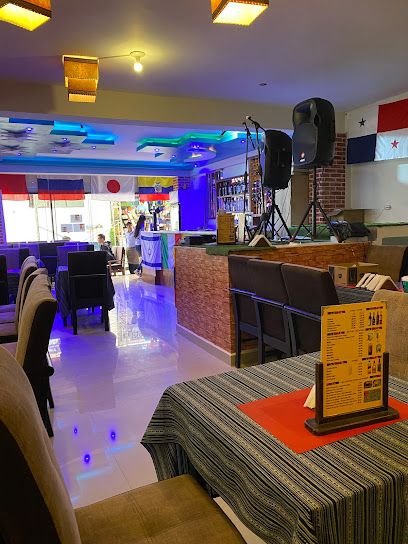
Inka Happiness Cultural Bar
Experience the vibrant flavors and cultural spirit of Peru at Inka Happiness Cultural Bar in Aguas Calientes, the gateway to Machu Picchu.
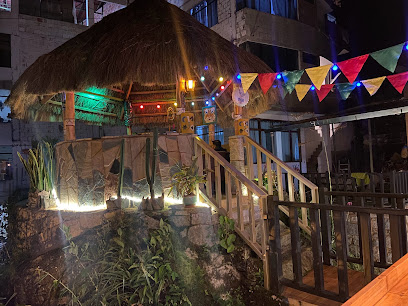
19.18Club.
Discover the heart of Aguas Calientes nightlife at 19.18Club, where cocktails meet dance in a vibrant atmosphere.
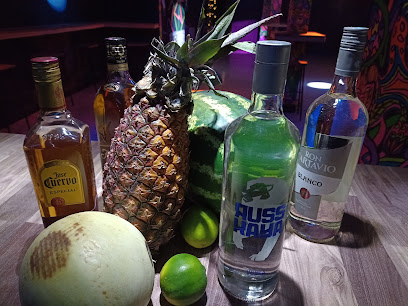
Big Brother's Bar
Experience the charm of Aguas Calientes at Big Brother's Bar, where travelers gather for great drinks and even better company.
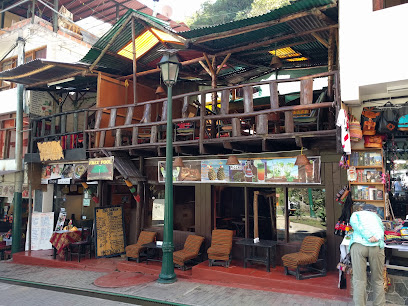
Terraza Cósmica by Supertramp
Experience breathtaking views and creative cocktails at Terraza Cósmica, the ultimate bar in Aguas Calientes for a vibrant night out.
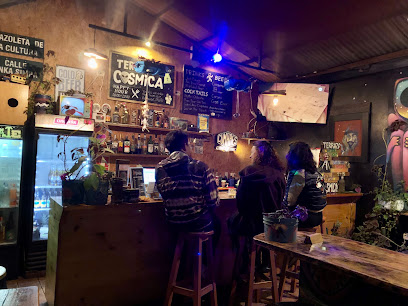
Modo Restobar
Discover the vibrant flavors of Peru at Modo Restobar, where traditional dishes meet modern culinary creativity in Aguas Calientes.
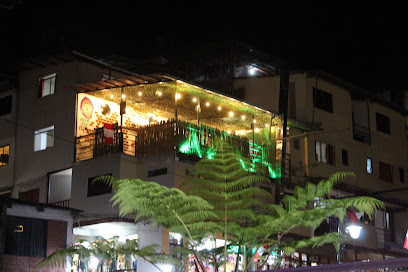
Green PUB machupicchu
Experience the vibrant atmosphere and authentic flavors of Peru at Green PUB Machupicchu, a must-visit gastropub in Aguas Calientes.

Mapi bar
Discover the charm of Mapi Bar in Aguas Calientes, where great drinks and a cozy atmosphere await after a day at Machu Picchu.

Machagchas resto bar
Experience the lively spirit of Aguas Calientes at Machagchas Resto Bar, where delicious local cuisine meets vibrant nightlife.
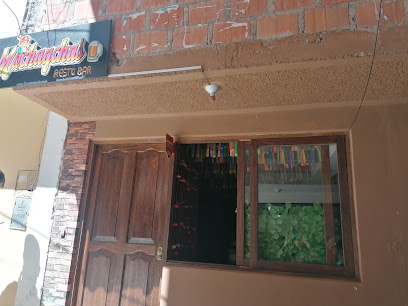
Local Phrases
-
- HelloHola
[oh-la] - GoodbyeAdiós
[ah-dee-ohs] - YesSí
[see] - NoNo
[no] - Please/You're welcomePor favor/De nada
[por fah-vor/deh nah-dah] - Thank youGracias
[grah-see-ahs] - Excuse me/SorryPerdón/Lo siento
[pair-dohn/low see-en-toh] - How are you?¿Cómo estás?
[koh-moh ehs-tahs] - Fine. And you?Bien. ¿Y tú?
[bee-en. ee too] - Do you speak English?¿Hablas inglés?
[ah-blahs een-glays] - I don't understandNo entiendo
[noh en-tee-en-doh]
- HelloHola
-
- I'd like to see the menu, pleaseMe gustaría ver el menú, por favor
[may goo-stah-ree-ah vehr ehl meh-noo, poor fah-vor] - I don't eat meatNo como carne
[noh koh-moh kahr-neh] - Cheers!¡Salud!
[sah-lood] - I would like to pay, pleaseMe gustaría pagar, por favor
[may goo-stah-ree-ah pah-gar, poor fah-vor]
- I'd like to see the menu, pleaseMe gustaría ver el menú, por favor
-
- Help!¡Ayuda!
[ah-yoo-dah] - Go away!¡Vete!
[veh-teh] - Call the Police!¡Llama a la Policía!
[yah-mah ah lah poh-lee-see-ah] - Call a doctor!¡Llama a un doctor!
[yah-mah ah oon dohk-tohr] - I'm lostEstoy perdido
[ehs-toy pair-dee-doh] - I'm illEstoy enfermo
[ehs-toy ehn-fehr-moh]
- Help!¡Ayuda!
-
- I'd like to buy...Me gustaría comprar...
[may goo-stah-ree-ah kohm-prar] - I'm just lookingSolo estoy mirando
[soh-loh ehs-toy mee-rahn-doh] - How much is it?¿Cuánto cuesta?
[kwan-toh kwehs-tah] - That's too expensiveEso es muy caro
[eh-soh ehs moo-ee kah-roh] - Can you lower the price?¿Puede bajar el precio?
[pweh-deh bah-har ehl preh-see-oh]
- I'd like to buy...Me gustaría comprar...
-
- What time is it?¿Qué hora es?
[keh oh-rah ehs] - It's one o'clockEs la una
[ehs lah oo-nah] - Half past (10)Es la diez y media
[ehs lah dyehs ee meh-dee-ah] - MorningMañana
[mah-nyah-nah] - AfternoonTarde
[tahr-deh] - EveningNoche
[noh-cheh] - YesterdayAyer
[ah-yehr] - TodayHoy
[oy] - TomorrowMañana
[mah-nyah-nah] - 1Uno
[oo-noh] - 2Dos
[dohs] - 3Tres
[trehs] - 4Cuatro
[kwa-troh] - 5Cinco
[seen-koh] - 6Seis
[says] - 7Siete
[see-eh-teh] - 8Ocho
[oh-choh] - 9Nueve
[nweh-veh] - 10Diez
[dyehs]
- What time is it?¿Qué hora es?
-
- Where's a/the...?¿Dónde está...?
[dohn-deh ehs-tah] - What's the address?¿Cuál es la dirección?
[kwal ehs lah dee-rehk-syon] - Can you show me (on the map)?¿Puedes mostrarme (en el mapa)?
[pweh-dehs mohs-trar-meh (en ehl mah-pah)] - When's the next (bus)?¿Cuándo es el próximo (autobús)?
[kwan-doh ehs ehl proh-ksee-moh (ow-toh-boos)] - A ticket (to ....)Un boleto (para ....)
[oon boh-leh-toh (pah-rah)]
- Where's a/the...?¿Dónde está...?
History of Aguas Calientes
-
Aguas Calientes, also known as Machu Picchu Pueblo, has its roots deeply embedded in the Inca civilization. The area served as a strategic gateway for Inca travelers and was likely utilized as a base for those visiting the nearby Machu Picchu, which was built in the 15th century. The Inca built extensive agricultural terraces and irrigation systems in and around Aguas Calientes, taking advantage of the region's rich biodiversity and favorable climate.
-
In 1911, American historian Hiram Bingham brought international attention to Machu Picchu, which significantly impacted Aguas Calientes. As visitors flocked to see the ancient site, Aguas Calientes evolved from a small settlement into a hub for tourists. This transformation laid the groundwork for the development of infrastructure, including hotels and restaurants, catering to the increasing number of visitors eager to explore the Inca citadel.
-
The 20th century marked a significant shift in Aguas Calientes' identity as it transitioned into a major tourist destination. The establishment of the train service from Cusco in the 1930s made access to Machu Picchu more feasible, further cementing Aguas Calientes' role as the primary gateway to the site. This boom transformed the local economy, with tourism becoming the backbone of Aguas Calientes, leading to a vibrant culture centered around hospitality and tourism-related services.
-
In recent years, Aguas Calientes has focused on preserving its cultural heritage while accommodating the influx of tourists. Local initiatives have aimed to promote traditional crafts, Andean cuisine, and the preservation of the natural environment surrounding Machu Picchu. Community-led efforts have also emerged to educate visitors about the significance of the area, fostering a deeper appreciation for both the historical and cultural aspects of Aguas Calientes.
-
As tourism in Aguas Calientes has grown, so have concerns about environmental sustainability. The town faces challenges such as waste management and the preservation of its natural landscape, particularly given its proximity to the cloud forests surrounding Machu Picchu. Efforts by local authorities and organizations aim to promote sustainable tourism practices, ensuring that Aguas Calientes can continue to thrive as a gateway to one of the world's most iconic archaeological sites while respecting its environment and cultural heritage.
Aguas Calientes Essentials
-
Aguas Calientes, the gateway to Machu Picchu, is accessible primarily by train. The two main train services are PeruRail and Inca Rail, which operate from Cusco and Ollantaytambo. The journey from Cusco to Ollantaytambo takes approximately 1.5 to 2 hours, followed by a 1.5-hour train ride to Aguas Calientes. Alternatively, you can hike the Inca Trail to reach Machu Picchu, which typically requires a multi-day trek.
-
Aguas Calientes is a small town, making it easy to navigate on foot. For those needing to travel further, taxis and motorcycle taxis (mototaxis) are available. Local buses run to the Machu Picchu entrance, departing frequently throughout the day. Bicycles can be rented, but be cautious on the hilly terrain.
-
Aguas Calientes is generally safe for tourists, but standard safety precautions are advised. Avoid displaying valuables and be cautious in the markets after dark. Petty theft can occur, especially in crowded areas. It’s best to stay in well-lit areas at night and avoid certain secluded spots along the river.
-
In case of emergency, dial 105 for the local police or 116 for medical assistance. There are a few medical clinics in Aguas Calientes, and it's advisable to have travel insurance that covers emergencies. For minor health issues, pharmacies are available throughout the town.
-
Fashion: Do dress comfortably and in layers due to variable weather. Don’t wear overly formal attire; casual is preferred. Religion: Do respect local customs, especially when visiting Machu Picchu. Don’t engage in loud behavior. Public Transport: Do give way to others when boarding buses. Don’t eat or drink on public transport. Greetings: Do greet locals with a friendly 'buenos días' or 'hola.' Don’t assume all locals speak English. Eating & Drinking: Do try local dishes, especially ceviche and cuy. Don’t drink tap water; opt for bottled water instead.
-
To experience Aguas Calientes like a local, visit the artisan market for handmade crafts and souvenirs. Try the local hot springs, which are a popular way to relax after a day of hiking. Engage with local vendors and ask for recommendations on food. Consider dining at family-run restaurants to enjoy authentic Peruvian cuisine.
Trending Landmarks in Aguas Calientes
-
Historic Sanctuary of Machu Picchu
-
Manco Capac Square
-
Baños Termales (Machu Picchu)
-
Mariposario of Machu Picchu
-
Mercado Aguas Calientes
-
Plaza Pueblo Machu Picchu
-
Ministry of Culture (Machu Picchu Park Passes)
-
Cascadas Alcamayo
-
Machu Picchu Peak
-
Camino peatonal a Machu Picchu
-
Estatua Machu Picchu Pueblo
-
Machu Picchu pueblo (Inca sculpture)
-
Machu
-
Cataratas de Aguas Calientes
-
Mirador Río Vilcanota Park
Nearby Cities to Aguas Calientes
-
Things To Do in Cusco
-
Things To Do in Ayacucho
-
Things To Do in Huancayo
-
Things To Do in Ica
-
Things To Do in Arequipa
-
Things To Do in Puno
-
Things To Do in Copacabana
-
Things To Do in Lima
-
Things To Do in Tacna
-
Things To Do in La Paz
-
Things To Do in Arica
-
Things To Do in Huaraz
-
Things To Do in Iquique
-
Things To Do in Cochabamba
-
Things To Do in Trujillo











